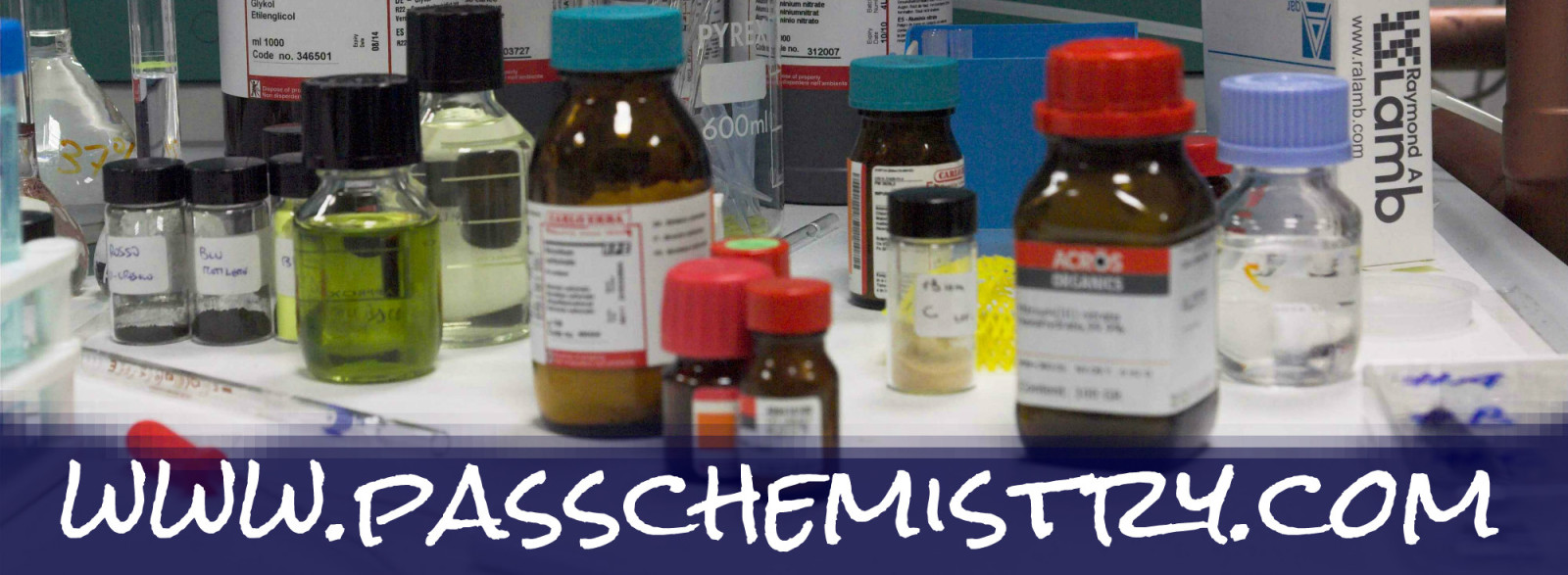Solubility Rules
Solubility is the extend to which a substance dissolves in a solvent to make a solution. Most of the time we are talking about substances dissolving in water to form Continue Reading →
Chemistry Tutorials and Help

Solubility is the extend to which a substance dissolves in a solvent to make a solution. Most of the time we are talking about substances dissolving in water to form Continue Reading →
a. 0.500 mol Rb b. 0.134 mol Kr a. 0.6046 x 10^23 molecules b. 1.5 x 10^24 molecules a. 3.00 x 10^24 molecules b. 3.13 Continue Reading →
Identify each of the following compounds as ionic, covalent, or acid. Then write the formula for the compound: 1.Cobalt (II) perchlorate 2.) Tetracarbon Heptasulfide 3.) Sodium chlorite 4.) Hydroiodic acid Continue Reading →
Identify each compound as ionic, covalent, or acid. Then name the compound: ) PbSO4 ) AlF3 ) BaO2 ) N2O5 ) HClO MgBr2 Ag2Cr2O7 ZnCl2 Fe(OH)3 H3PO4 Mixed Compounds #3 Continue Reading →
Classify each of the following compounds as ionic, covalent, or acid. Then write a formula for each compound: 1.Phosphorus pentachloride 2.) Aluminum nitrite 3.) Nitrous acid 4.) Tin (II) sulfate Continue Reading →
Mixed Compounds: (Contains ionic, covalent, and acids to practice): Set 1: Write the name when given the formula Set 2: Write the formula when given the name Set 3: Write Continue Reading →
(Click on the images below and they will open up larger and less blurry!)
Atomic Structure (Powerpoint notes) Atomic Structure (PDF notes for printing) Atoms Video to Watch: https://www.youtube.com/watch?v=Y7LhSfj11w0 AtomicStructureFlowChart (for reference Atomic Structure Practice (worksheet to print) Click here for answers to the atomic structure practice! Ions Practice Continue Reading →
Ch. 3 Thermo Notes (powerpoint version) Specific Heat Worked Examples and Practice (powerpoint version) Worked Solutions to Specific Heat Practice (These are the solutions to the 5 practice problems at the end Continue Reading →
Remember that during a physical change, we change the way matter looks but we do not break bonds or make new ones. Therefore, physical changes would not alter the chemical Continue Reading →